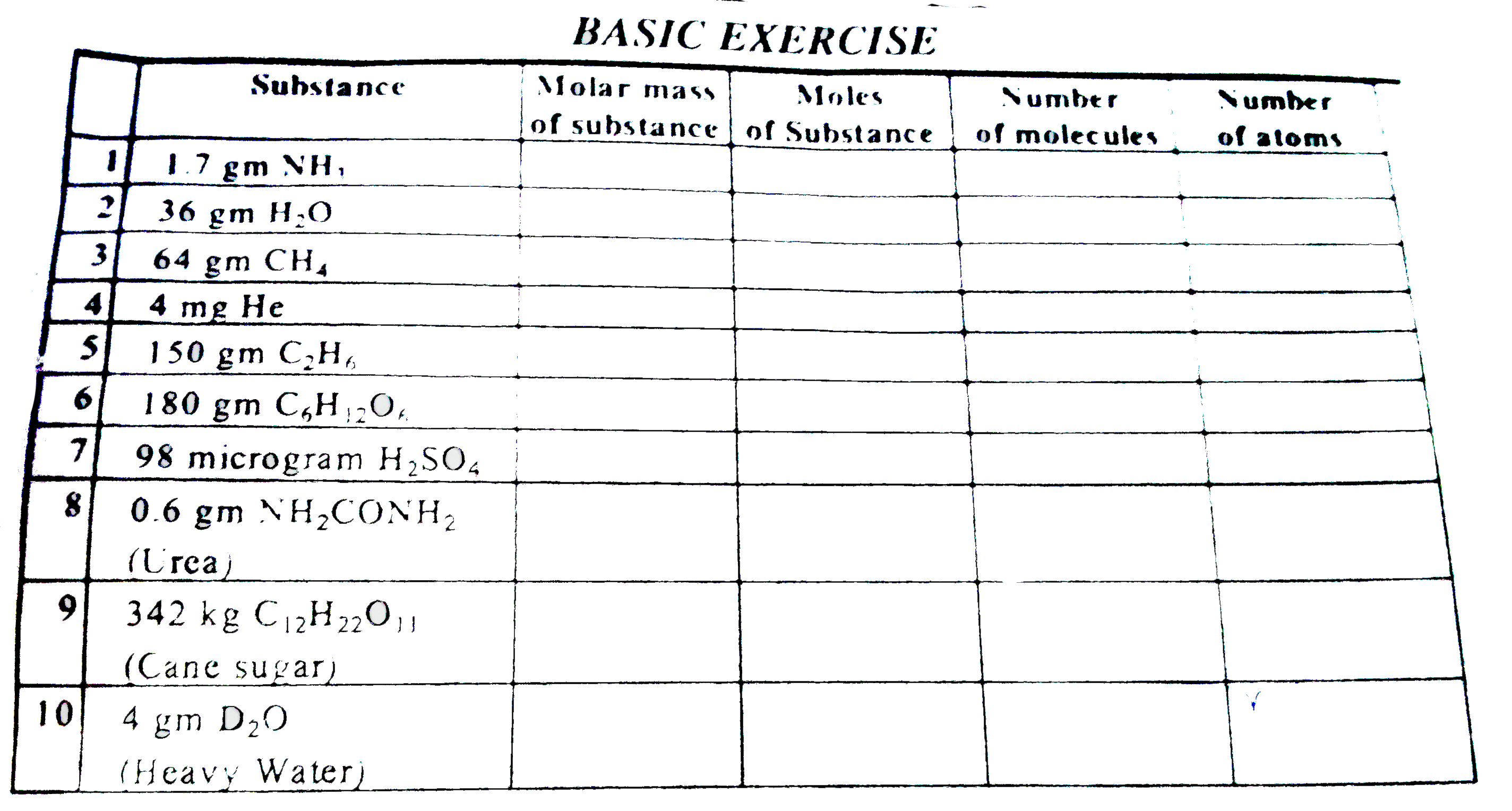A+B→A3B2(unbalanced)
A3B2+C→A3B2C2 (unbalanced)
Above two reactions are carried out by taking 3 moles each of A and B and one mole of C.Then which option is/are correct ?
1 mole of A3B2C2 is formed
12 mole of A3B2C2 is formed
1 mole of A3B2 is formed from first reaction
12 mole of A3B2 is left finally.
The correct Answer is:B, C, D
Step by step video, text & image solution for A+BtoA_3B_2(unbalanced) A_3B_2+C to A_3B_2C_2 (unbalanced) Above two reactions are carried out by taking 3 moles each of A and B and one mole of C.Then which option is/are correct ? by Chemistry experts to help you in doubts & scoring excellent marks in Class 11 exams.
Updated on:21/07/2023Topper's Solved these Questions
- MOLE CONCEPT, STOICHIOMETRY & CONCENTRATION TERMSBOOK - GRB PUBLICATIONCHAPTER - MOLE CONCEPT, STOICHIOMETRY & CONCENTRATION TERMSEXERCISE - Multiply Objective type
59 Videos
- MOLE CONCEPT, STOICHIOMETRY & CONCENTRATION TERMSBOOK - GRB PUBLICATIONCHAPTER - MOLE CONCEPT, STOICHIOMETRY & CONCENTRATION TERMSEXERCISE - Comprehension#1
1 Videos
- MOLE CONCEPT, STOICHIOMETRY & CONCENTRATION TERMSBOOK - GRB PUBLICATIONCHAPTER - MOLE CONCEPT, STOICHIOMETRY & CONCENTRATION TERMSEXERCISE - Reasoning type
24 Videos
- ISOMERISMBOOK - GRB PUBLICATIONCHAPTER - ISOMERISMEXERCISE - SUBJECTIVE TYPE
67 Videos
- NOMENCLATURE AND CLASSIFICATIONBOOK - GRB PUBLICATIONCHAPTER - NOMENCLATURE AND CLASSIFICATIONEXERCISE - Subjective Type
24 Videos
Similar Questions

KClO3→KCl+O2(unbalanced),
If in above reaction 5 moles of KClO3 was heated, then find moles of O2 produced on completion of reaction.
View SolutionIn the reaction 4A+2B+3C→A4B2C3, the number of moles of product formed will be if starting from 2 moles of A, 1.2 moles of B and 1.44 moles of C
View Solution
Knowledge Check
For the reaction A + 2B → C, 5 moles of A and B moles of B will produce
A5 moles of CB4 moles of CC8 moles of CD13 moles of CFor the reaction A+2B→C,5moles of A and 8moles of B will produce :-
A5 moles of CB4 moles of CC8 moles of CD13 moles of CFor reaction A + 3B → 2C + D
Which one of the following is not correct ?ARate of disappearance of A = Rate of formation of DBRate of formation of C = 23 × Rate of disappearance of BCRate of formation of D = 13 × Rate of disappearance of BDRate of disappearance of A = 2 × Rate of formation of C
In the reaction , 4A+2B+3C→A4B2C3 what will be the number of moles of product formed , starting from 1 mole of A,06 mole of B and 0.72 mole of C :-
View SolutionIn the reaction 4A+2B+3C→A4B2C3, what will be the number moles of product formed, starting from one mole of A, 0.6 moles of B and 0.72 moles of C ?
View Solution14 moles of A and 20 moles of B, 8 moles of C is formed in the following reaction 3A+4B→2C then.
View SolutionThe reaction A(g)+B(g)⇔2C(g) is occurred by mixing of 3 moles of A and 1 mole of B in one litre container. If a of B is 13 , then Kc for this reaction is:
View SolutionIn the reaction 4A+2B+3C⇒A4B2C3 what will be the number of moles of product formed ? Starting from 2 moles of A, 1.2 moles of B and 1.44 moles of C.
View Solution
